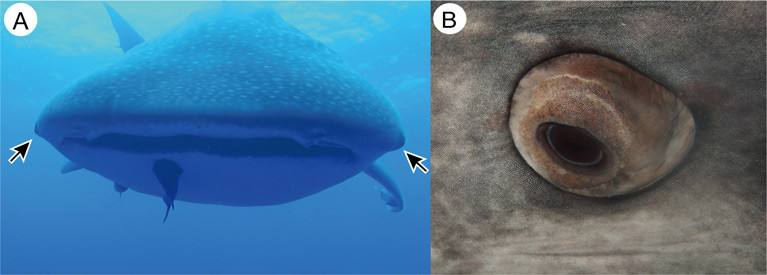Japanese researchers have found that whale sharks have protective “armour” around their eyeballs in the form of tiny teeth.
Japan's Okinawa Churashima Research Centre scientists studied the eyes of both living and dead whale sharks, which can grow to 18-metres and have eyes on the sides of their head.
The sharks, which eat mainly plankton, can retract their eyes to protect them from other creatures in the sea, and don’t have eyelids.
Their eyes are protected in a casing, which bulges out into the water, and the researchers found that these casings are covered in dermal denticles or tiny teeth. The denticles have an “oak-like shape” similar to human molars, they say.
Dermal denticles have been found in previous research on other parts of the whale shark’s body. The researchers found each whale shark eye covering has approximately 3,000 denticles, and most densely packed near the irises.
They suggest these may serve to protect the whale shark eyes from attacks by other sea creatures.
More details of the research are on the open-access website, Plos One here































































